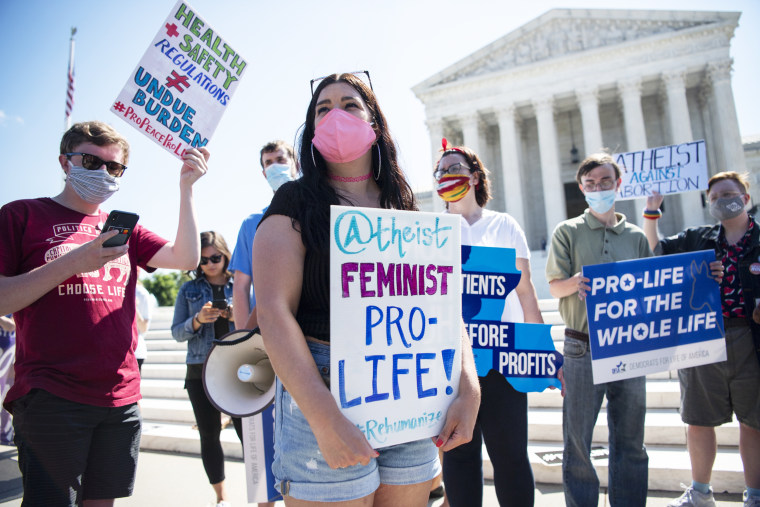Until now, 2011 was the most brutal year for abortion rights in recent history. In the 12 months after the “red wave” in the 2010 midterm elections, Republicans enacted 92 abortion restrictions across 24 states, kicking off a so-called “war on women” that shut down dozens of abortion clinics across the country and dominated the national political conversation through 2014.
The widespread, coordinated attacks on abortion access in the states are ramping up again.
Then Donald Trump happened, and he distracted the nation with his near daily disasters, stunts and scandals. He also added three anti-abortion conservatives to the Supreme Court, one of them replacing feminist icon Justice Ruth Bader Ginsburg, thus pretty much guaranteeing a rollback of women’s rights.
Now, the widespread, coordinated attacks on abortion access in the states are ramping up again — but they’re coming at a more rapid clip than they did in 2011, flying way under the radar, and have a better chance at reaching a very friendly Supreme Court. In other words, 2021 is shaping up to be the worst year for abortion attacks in decades, and hardly anyone seems to be talking about it.
The Guttmacher Institute, a reproductive health research organization that tracks abortion bills in the states, assessed the damage in a report issued last week: In the first four months of 2021, state lawmakers have introduced a jaw-dropping 536 abortion restrictions, including 146 bans, and 61 of those bills have been signed into law. Nearly half (28) of the restrictions were enacted just last week, between April 26 and 29, which was the highest number of anti-abortion bills signed in a single week in over a decade.
In the first four months of 2021, state lawmakers have introduced a jaw-dropping 536 abortion restrictions.
Among the laws enacted last week: Idaho Gov. Brad Little signed a bill banning abortion at the first sign of a fetal heartbeat, which is before many women even realize they’re pregnant. (It won’t become law unless a federal appeals court upholds similar legislation in another state.) Oklahoma Gov. Kevin Stitt signed three new anti-abortion laws, including one that would ban the procedure entirely outside of medical emergencies. Arizona enacted a ban on abortion in cases where a genetic abnormality, like Down syndrome, is detected. Montana banned abortion at 20 weeks and required that abortion medication be administered in person, rather than via telehealth, which will severely restrict women’s access (especially low-income women and working mothers) in the sprawling, rural state amid the pandemic.
Other new restrictions include mandatory ultrasound bills and so-called TRAP laws (Targeted Regulation of Abortion Providers), which are burdensome regulations designed to make it impossible for abortion clinics to operate. The Supreme Court struck down such a law in 2020, with Chief Justice John Roberts providing the swing vote — but that was before Trump added the very religious, right-wing Justice Amy Coney Barrett to the court, tipping it safely out of swing vote territory.
Trump also appointed more than 200 conservative judges to the federal bench, dramatically reshaping the federal judiciary for the foreseeable future and providing more avenues for anti-abortion laws to worm their way up to the Supreme Court and challenge precedent.
More than 200 Republicans in Congress directly asked the Supreme Court to overturn Roe in an amicus brief last year.
Republicans have been open about their strategy of using state-level restrictions as a vehicle to challenge Roe v. Wade, the landmark 1973 case that legalized abortion until the fetus is viable. More than 200 Republicans in Congress directly asked the Supreme Court to overturn Roe in an amicus brief last year.
The problem is, abortion is an incredibly common procedure (1 in 4 women will have one by age 40), and a majority of the American public supports legal abortion in all or most cases. Republicans’ relentless focus on abortion in 2011 even backfired on them in the 2012 presidential election, when President Barack Obama defeated Mitt Romney, thanks to an unprecedented gender gap at the polls.
Republicans’ best hope this time around is to wage a much quieter but more effective war on abortion — one that largely avoids political backlash, but suddenly appears at the Supreme Court. It may be time to resume paying attention.
